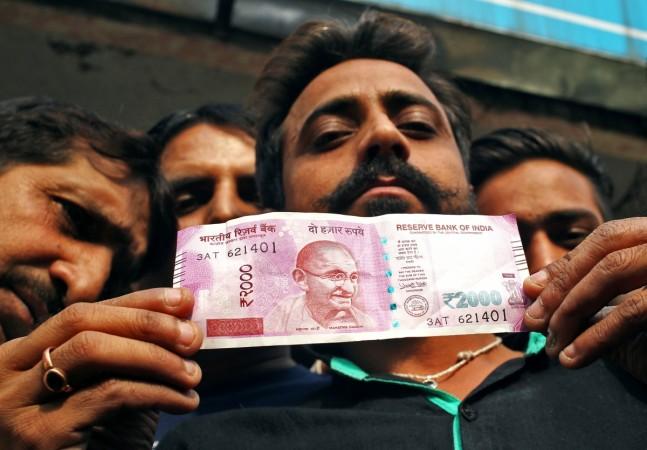
The Union Budget 2018 is shorn of half its glitz with the GST Council taking on the glamorous role of tinkering with the tax slabs on numerous goods and services. However, as usual, there is hype around how finance minister Arun Jaitley will treat direct taxes.
Optimism of the oppressed taxpayer oozes in liberal quantities around every budget season, with the media engaging in ticklish hypothesis on a softer tax regime for the common man. That's a futile thought. There isn't much wiggle room for any finance minister as long as an impotent system allows large-scale criminal tax evasion.
It's an understatement to say India's direct tax collection statistics don't truly reflect the income and consumption pattern of the people in the country. Of course, it's also true that almost 50 percent of Indians are not tax evaders, they just don't make enough to pay taxes. And they will remain so until and unless the wealth -- legal and illegal -- of the others is accounted for and the "filthy" rich are made to pay taxes.
Addressing high-end tax evasion
Will India ever find ways to bring to book its increasing tribe of high-end tax evaders? The business barons, high net worth professionals, farm oligarchs and all and sundry that pile wealth through graft and then "round-trip" illegal wealth through tax havens?
The Direct Taxes Code (DTC) has been in the works since 2009. Around six months back the government set up a panel to submit a report on its implementation. The DTC will replace the more than 50-year old Income Tax Act of 1961 if it becomes an Act. Will it address the core issue of blunt, vulgar tax evasion?
Who pays taxes in India? Currently, only 4.5 percent of India's 1.3 billion people pay direct taxes. More nasty surprises follow. Of this total number, as many as 1 crore declared they didn't have any taxable income, which leaves the real taxpayer number at 2.7 crore. Nearly 2 crore declared income in the lowest tax slab of between 2.5 lakh and Rs 5 lakh. Only 52 lakh people declared above 5 lakh but below Rs 10 lakh. A mere 24 lakh people were paying taxes in the highest bracket.
And who don't pay taxes? According to statistics released by the Income Tax Department in November 2016, only 45,027 people in the country reported income between 1 crore and Rs 5 crore. Just 45,000 people! Therein lies the problem. India's wealthy don't pay taxes. The details are more alarming. Only 98,815 people had a gross income of more than Rs 50 lakh.
Cash dump post demonitisation
So where is India's rich? Where is the celebrated middle class that has powered a relentless boom in luxury consumer segments? And wait for the real surprise. Of the 45,000 people who reported income above 1 crore, as many as 24,942 were salaried people. This means that there were only around a meagre 25,000 non-salaried people in the country who reported earnings above 1 crore. That's the picture of a third-world India with no rich businessmen around!
Now, look at the cash dump that followed the apocalyptic currency demonetisation in November 2016. From that date to December 31, the cash deposits made in devalued currency notes alone were mind-boggling. Deposits ranging between Rs 2 lakh and Rs 80 lakh flowed into more than 1 crore accounts. And the average size of the deposits was slightly above Rs 5 lakh. This was hoarded money creeping back into the system at gunpoint. Not your regular cash circulation that oils the economy.
Who are these 1 crore people who had to dump the hoarded devalued currency? Obviously, they are NOT among those 2 crore people who pay any tax. What loopholes in the system help them carry out large-scale tax evasion?
Poor outback with no middle class?
Is India still a poor outback with no real middle class that can pay fair taxes? The current direct tax statistics might persuade you to think so. But the truth is far from that. According to the Economist, there are at least 30-40 crore Indians in the ranks of the global middle class. It cites an HSBC study that projects Indian middle classes to grow to around 55 crore by 2015.
And, by Indian standards, how much should you earn to be in the middle class? According to India's National Council of Applied Economic Research, someone who earns Rs 2.5 lakh a year is in the middle class. That's a debatable number, of course, just like our poverty benchmarks. However, it's curiously the same as the base tax slab.
Maybe a little roundabout logic here, but if India does have a 30-crore-strong middle class as per the global estimates, how come only about 7 percent of them pay any taxes? That's taxation at the base rate. How about the high net worth individuals? There are more than 2 lakh dollar millionaires in India according to conservative industry estimates. To be a dollar millionaire you've to have a minimum worth of Rs 6.5 crore.
While direct tax collection remains a joke, the luxury goods economy is booming. Let's check some ballpark figures that give a sneak peek into the consumption patterns in the country. Nearly 40,000 ultra-luxury cars were sold in the country in 2017 by the top five carmakers — Mercedes Benz, Audi, BMW Volvo and Jaguar Land Rover. This is over and above sales in the niche super sports car segment, the Lamborghinis, Ferraris et al.
Dodging taxes with ease and impunity
What about the ultra-luxury apartments that are bought and sold routinely at astronomically high figures in the big metropolises? Just take one project. It was recently reported that the Trump Towers in Gurugram sold 20 flats worth Rs 150 crore within just one day of its launch. That project alone has 250 apartments, each priced between Rs 5 crore and Rs 10 crore.
India imported 846 tonnes of gold in 2017, according to MMTC-PAMP data. According to Euromonitor, the size of the luxury goods market in India was Rs 21,610 crore in 2016.
Even as a large chunk of the wealthy dodges taxes with ease and impunity, the topics for sorry debates around the budget time are those wee-bit of tweaks in the tax slabs that the finance minister may or may not announce! Everyone is missing the wood for the trees. And by extension the government is barking up the wrong tree.
For the honest tax payer, the burden is here to stay. The current direct tax-to-GDP ratio is 5.6 percent. What that also means is that vast chunks of the money needed to run the bloated government is derived through indirect taxation -- which puts the honest taxpayer through double taxation in the end.
As the old Orwellian adage goes, some animals are more equal than others. Happy Budget 2018!
















